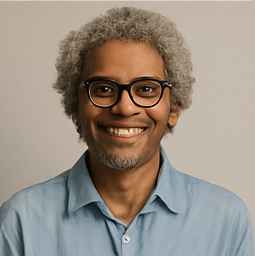Innovative Biomineral-Infused Concrete Combines 3D Printing and Carbon Capture

In a groundbreaking collaboration, engineers, designers, and materials scientists at the University of Pennsylvania have developed a new form of concrete that not only fulfills structural needs but also plays a significant role in combatting climate change. This innovative concrete, infused with biominerals, utilizes 3D printing technology and draws inspiration from the fossilized architecture of microscopic algae, known as diatoms.
Concrete has been a cornerstone of civilization, enabling the construction of monumental structures from ancient Egyptian pyramids to modern highways. However, this essential material also poses a significant environmental challenge, accounting for nearly 9% of global greenhouse gas emissions. As the world grapples with the impacts of climate change, finding sustainable methods to produce materials for new homes, bridges, and other infrastructure is imperative.
The revolutionary concrete designed by the Penn team boasts remarkable properties; it is lightweight yet structurally sound and captures up to 142% more carbon dioxide (CO₂) compared to traditional concrete mixes. This is achieved while using less cement, all while meeting standard compressive strength targets.
The standout ingredient in this new concrete formulation is diatomaceous earth (DE), a filler made from fossilized microorganisms. The researchers discovered that DE's fine, sponge-like structure not only enhances the stability of the concrete during 3D printing but also provides ample surface area for capturing CO₂ effectively.
In their detailed findings published in Advanced Functional Materials, the researchers highlight the double benefit of this new concrete: it not only supports the weight of buildings but also contributes to the restoration of marine ecosystems and the reduction of atmospheric CO₂ levels.
Co-senior author Shu Yang, a professor at the School of Engineering and Applied Science, emphasizes the unexpected advantages of their design. “Usually, if you increase the surface area or porosity, you lose strength,” she states. “But here, the structure became stronger over time.” Yang explains that by optimizing the geometry, the team achieved an additional 30% increase in CO₂ conversion while maintaining compressive strength comparable to normal concrete.
Co-senior author Masoud Akbarzadeh, an associate professor at the Weitzman School of Design, adds that the project represents a significant shift in structural logic. “We could reduce the material used by almost 60% while still supporting the load, demonstrating that we can accomplish so much more with less,” he said.
The potential of DE lies not just in its composition but also in the application of advanced geometrical designs. The team utilized triply periodic minimal surfaces (TPMS), which are complex yet naturally occurring structures found in various biological systems. These geometric forms maximize surface area and structural efficiency while minimizing the amount of material needed.
To create the printable concrete ink, first author Kun-Hao Yu undertook extensive trials to fine-tune the mixture and the printing process. “Concrete isn’t like standard printing materials,” Yu explains. “It requires a specific balance of flow and stabilization.” The team discovered that despite its high porosity, the new material gains strength as it absorbs CO₂, a promising finding for future applications.
Looking ahead, the researchers are focused on scaling their work to create full-size structural elements such as floors and facades, while also exploring potential uses in marine infrastructure. The porous nature of DE-TPMS concrete may lend itself to ecological projects like artificial reefs, where it can support marine life while sequestering CO₂ from the water.
As they continue their research, Yang's team is also considering alternative binder materials to replace traditional cement, aiming to further reduce the environmental impact of concrete production. “What if we could eliminate cement altogether or utilize waste materials?” Yang proposes, indicating an ambitious vision for the future of construction materials.
In realizing the potential of concrete as a dynamic, responsive material, the team has opened the door to a new era of sustainable construction. “The moment we stopped thinking about concrete as static and started seeing it as dynamic—as something that reacts to its environment—we unlocked a world of possibilities,” Yang concluded.
For more information, refer to the study by Kun‐Hao Yu et al., titled 3D Concrete Printing of Triply Periodic Minimum Surfaces for Enhanced Carbon Capture and Storage, published in Advanced Functional Materials.




























